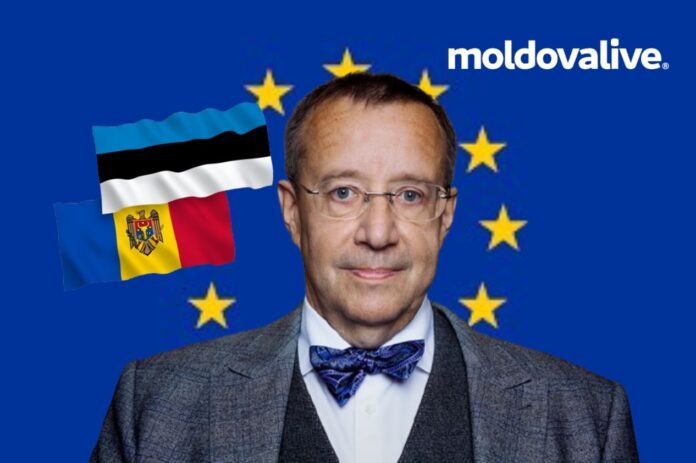Estonia, like Moldova, broke away from the former Soviet Union over 30 years ago. However, as a small state with a population of 1.4 million, Estonia chose a different path, joining NATO and the EU. Today, it is the wealthiest of the Baltic states and boasts one of the most advanced economies in Eastern Europe. According to former Estonian President Toomas Hendrik Ilves, Estonia’s success is the knowing result of when to “press the accelerator” to achieve remarkable regional progress. Ilves shared these insights in an interview with IPN News Agency.
Estonia joined the EU during its largest expansion in population and territory. Public support for EU membership was low, but politicians effectively convinced the population of its benefits. As a result, the “pro” vote won in the referendum. Ilves reflected on the challenges, offering valuable insights for Moldova’s upcoming referendum.
“Back then, many didn’t understand what the EU was. Misleading slogans circulated, such as ‘Why join another union?’ due to the word ‘union.’ There was a low level of understanding, which required extensive explanations. Even the government had its doubts,” Ilves recalled. “But with the leadership of the Prime Minister, we managed to communicate the benefits effectively. We took a different approach from Moldova by holding the referendum after completing the negotiations. When you join the EU, you agree to adopt a common set of laws, something that’s existed for centuries, like the Lubeck law.”
FOR THE MOST IMPORTANT NEWS, FOLLOW US ON TWITTER!
Asked about how Estonia managed to remove Russian troops from its territory, Ilves emphasized swift action, external support, and strategic planning. “In July 1992, our top priority was removing Russian forces. With the help of allies like Sweden and the U.S., Russian troops left by August 1993. I was surprised Moldova didn’t take similar steps at the time, which I see as a major mistake by its 1991-1992 government.”
Ilves also addressed the challenge of handling pro-Russian sentiment, which has become more active in Moldova. “In Estonia, there wasn’t a flood of anti-European funding like there is in Moldova. Initially, Russia didn’t oppose our EU membership because they didn’t grasp the significance of the EU. It wasn’t until later, when countries in the EU started prospering rapidly, that Russia saw it as a threat. The same applies to Moldova’s association agreement with the EU—Russia didn’t see it as a threat.”
Ilves pointed out that economic prosperity is key to addressing Moldova’s pro-Russian sentiment. “The economic benefits and a better life will resonate with Moldova’s pro-Russian population. Russia, on the other hand, means poverty. They might give money to Russians in Moldova, but they won’t invest in industry, agriculture, or the environment—none of that will happen. Nothing Russia offers compares to what the EU can provide.”
In a message to Moldovan citizens ahead of important decisions, Ilves said, “Your choice is between democracy and a ‘Soviet Bardakistan,’ between prosperity and poverty, between the future and the past.”
Toomas Hendrik Ilves, who served as Estonia’s President from 2006 to 2016, was born on December 26, 1953, in Sweden and grew up in Estonia. He graduated from the University of Tartu and Columbia University. Before becoming President, he held key positions, including Estonia’s foreign minister and a member of the European Parliament. He strongly supported Estonia’s integration into the EU and NATO and promoted digital innovation. Even after his presidency, Ilves remains an influential figure in international affairs.


